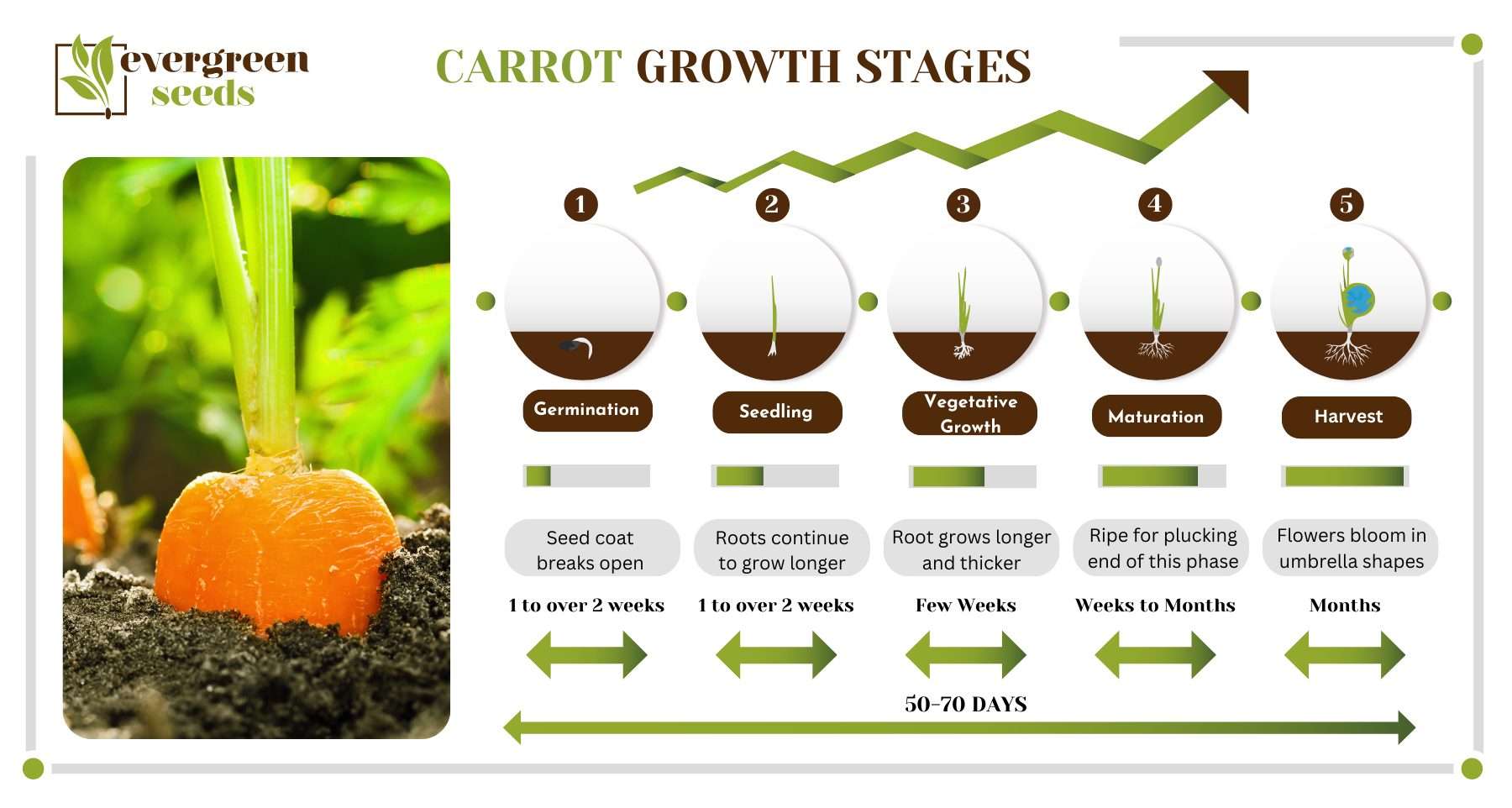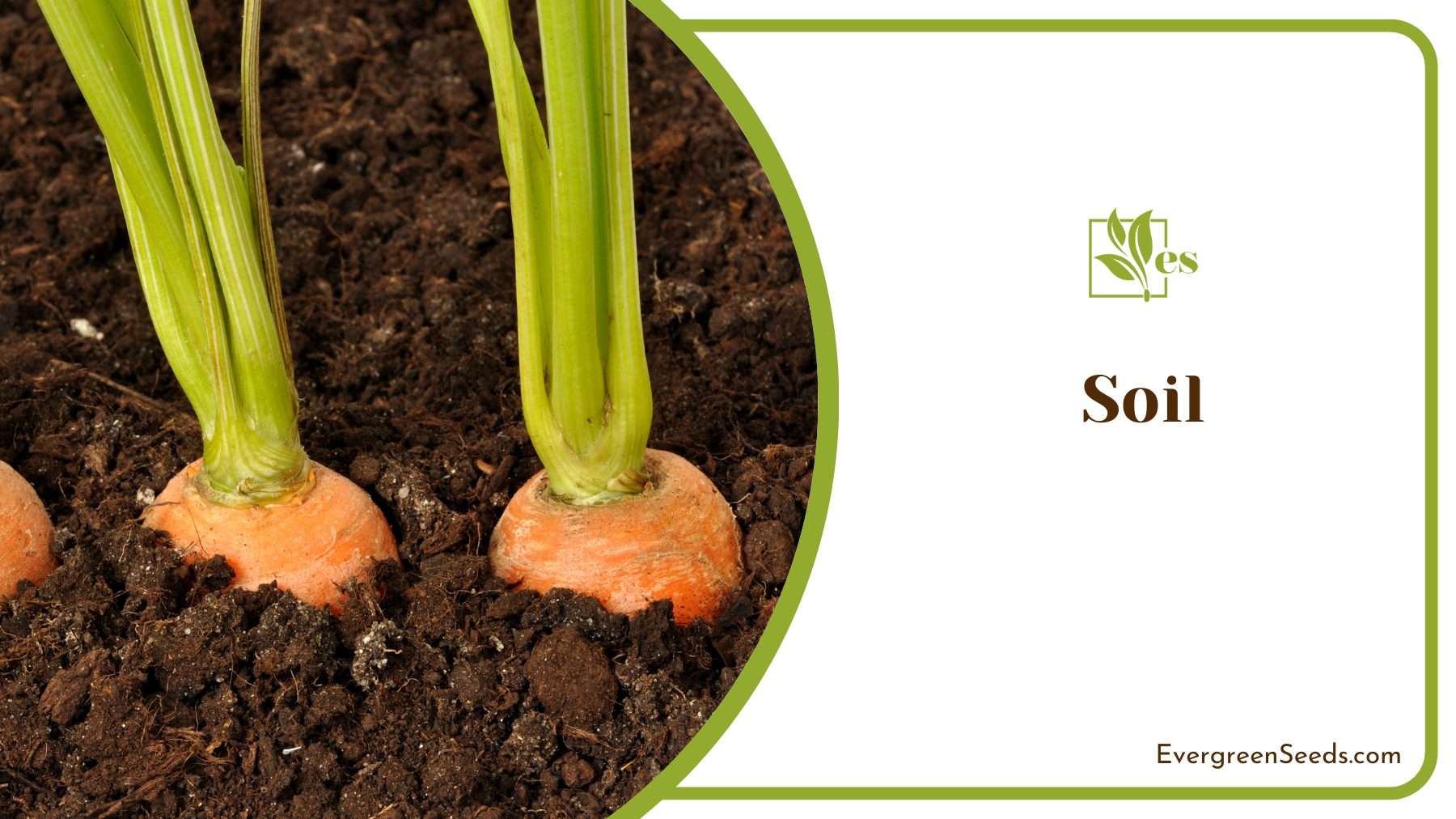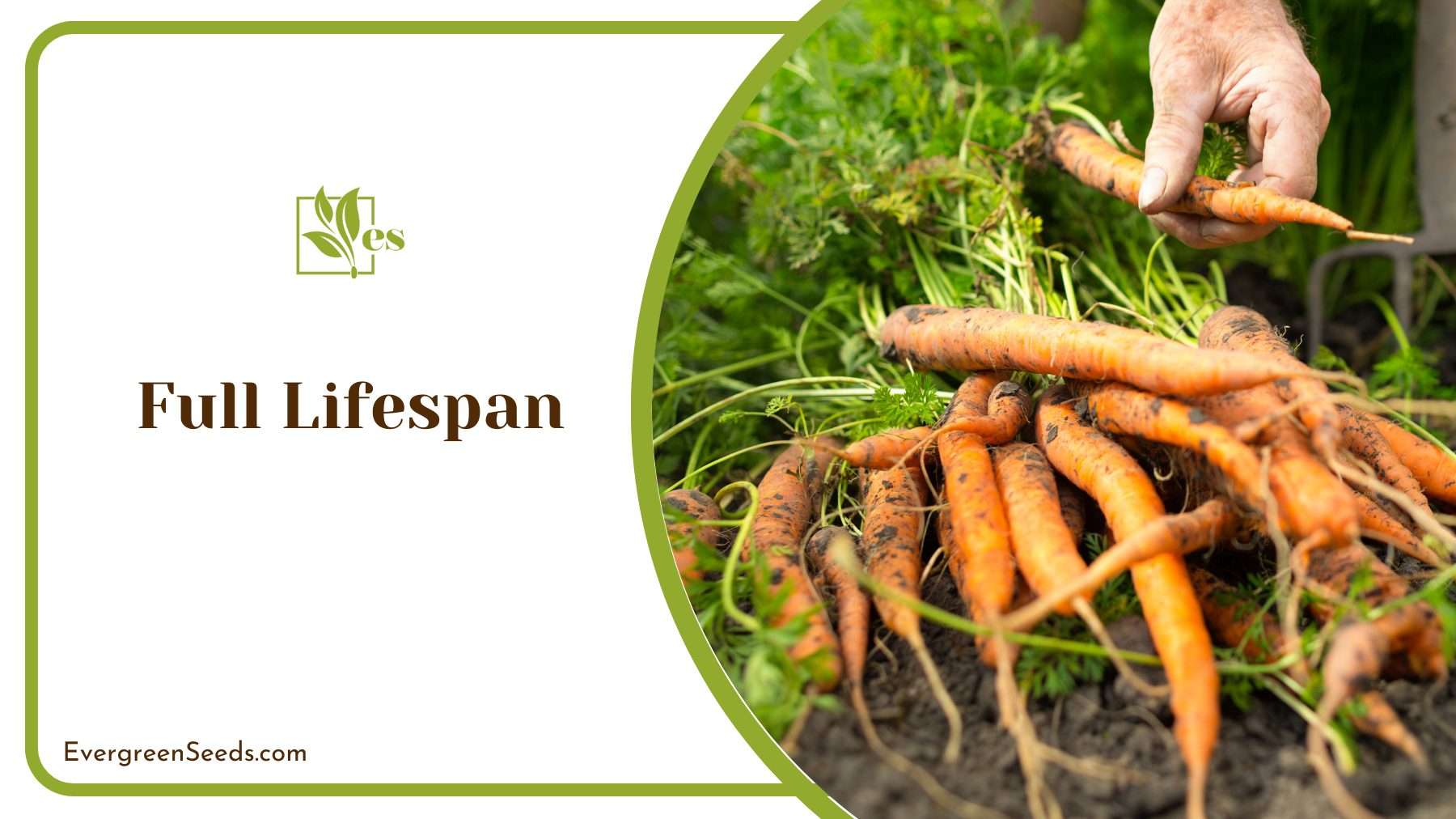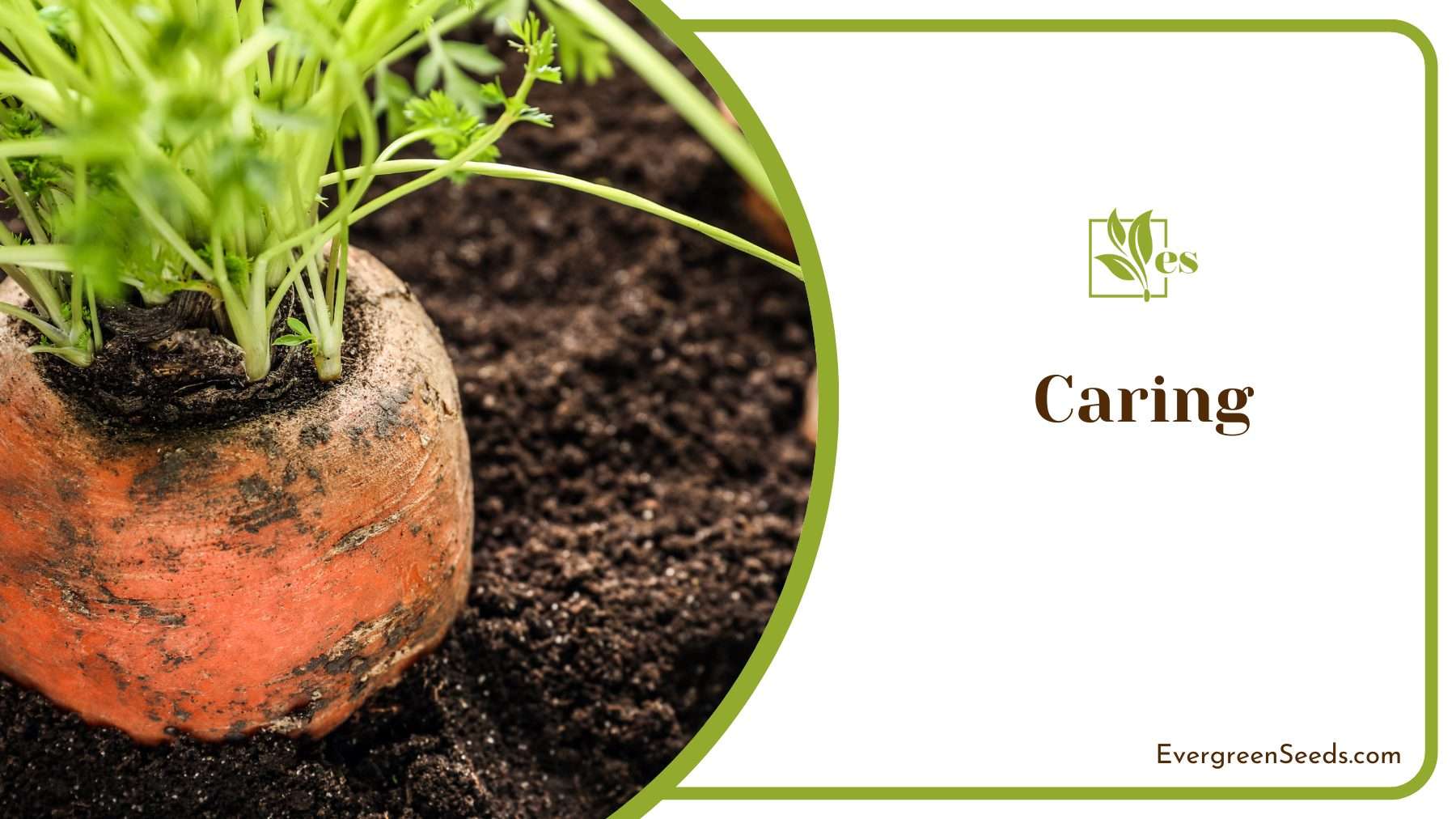- When to Plant Corn in San Diego: Optimal Seasons and Tips - July 19, 2024
- When to Plant Hydrangeas in Illinois: Best Timing for Optimal Growth - July 19, 2024
- Why Are My Radishes Growing Above Ground: Uncovering the Causes - July 19, 2024

Carrot growth stages are necessary to learn if you’ve decided to try your hand at growing the root vegetable. Since they are classified as biennial, it takes two years to complete their whole life cycle.
The embryo in its seed grows into a mature plant during the first year, and then the plant produces foliage and stores sugars in an expanded root as it grows.
In this article, we’ll walk you through carrots growing stages and everything else you need to know about growing carrots.
JUMP TO TOPIC
What Are the Different Carrot Growth Stages?
💥 The carrot growth cycle is divided into four stages. Seeds are sown in early spring or late summer when the soil is cold, and germination starts within two weeks. The first three growth stages are vegetative, meaning the carrot plant grows leaves, roots, and stems.
Once the plant reaches the reproductive stage, it will begin to flower and set seed. Here are more details on each carrot growth stage:
– Stage 1: Seed Germination
Germination begins in the first few weeks after sowing the carrot seeds. The seed absorbs water and swells, the seed coat breaks open, and a small root grows downward into the soil. At the same time, a carrot seedling starts to grow upward towards the light.
– Stage 2: Seedling Growth
It’s a slow, steady growth phase starting with the seedling developing its first true leaves, and the roots continue to grow longer and thicker into characteristic carrot taproot. At this stage, the plant is still dependent on the seed for food reserves.
– Stage 3: Vegetative Growth
The carrot plant develops additional leaves, rises in height, and begins photosynthesis to fuel growth. This results in rapid tuber expansion and carrot top growth. During the next few weeks, the root grows longer and thicker, with “shoulders” emerging from the ground. If you want to harvest carrots, they’ll be ripe for plucking near the end of this phase.
– Stage 4: Reproductive Growth
If the carrot is not harvested, the plant enters into a period of dormancy to pass frosty conditions — the top dieback, and the growth stops.
New shoots appear in early spring, and as the temperature rises, the plant starts a rapid upsurge in growth, called “bolting.” The flowers bloom in the umbrella shapes, and eventually, the plant sets seeds, ending its life cycle.
What Do Carrot Plants Need To Grow?
Carrots prefer growing under bright sun and a cool soil temperature. Nearby plants on a raised bed will help keep the soil from becoming too hot. Ensure consistent moisture to produce the tasty carrots. Below are the detailed requirements.
– Soil
Carrots are a root crop, so they need loose, deep, and well-drained soil to develop properly. If your soil is too heavy, add organic matter and a few handfuls of sand to help loosen it up.

Prepare the soil with a spade or tiller to a depth of 12 inches and remove rocks or other debris that might impede carrot growth.
– Sunlight
Carrots need full sun to grow properly, so make sure to plant them in a spot with six hours minimum of daily sunlight. If you live in a hot climate, some afternoon shade will protect the carrot roots from getting too warm.
– Watering
Carrots require about 1 inch of hard tap water each week, although the need varies depending on carrot development stages. Water more frequently during the vegetable stage and less so during the reproductive period.
– Fertilizer
Carrots are not heavy feeders and do not respond well to nitrogen fertilizer. Too much nitrogen produces lush foliage but causes small, stunted roots. A composted manure or balanced fertilizer is best for carrot growth.
The Full Lifespan of a Carrot Plant
The carrot is a biennial plant, meaning that it takes two years to complete its full life cycle. The first year is spent growing leaves, roots, and stems. In the second year, the plant enters a dormant phase over winter and begins to flower in the spring of the second year. Finally, it sets seeds and dies in summer.
However, most carrots are harvested in the first year before the plant enters its reproductive phase. That means that most carrots never get a chance to flower or set seeds. Instead, they are pulled from the ground and eaten while still in the vegetative stage of growth.

Here is a short summary of changes that occur over the lifespan of a carrot plant:
- Depending on the climate, there are two carrots growing seasons. You can either sow carrot seeds as soon as the soil can be worked in the spring — suitable for the cold climate or plant seeds in late summer or early fall and get a winter crop — ideal in hot climates.
- Carrots planted in late summer will be ready to pick from October to November. For the spring crop, harvest time is typically June to July. This, however, will vary based on carrot variety and weather conditions. Generally, carrots are ready to harvest 75-80 days after planting.
- As the plant matures, the carrots can stay edible in the ground for two to four weeks before they harden and become woody. This period can be stretched to another week in cooler weather.
- If you don’t pick carrots, the plant will start to consume the roots for energy, and the carrots will become small, stunted, and woody. At the same time, the green top will become larger and start the reproduction process by flowering.
- A fully grown carrot plant can reach up to 2 feet in height. But some dwarf varieties only grow to about 6 inches. The plant’s width will also differ based on carrot type, but they are generally about 8 inches.
- As the plant nears its death after completing its life cycle, it starts to bolt. Bolting is when the plant produces a long, thin stem with a flower on top. This is their opportunity to continue the species by making seeds.
- Carrot plant bolts into umbrella-like flowers that produce small black seeds. Once the seeds mature, the plant slowly turns yellow and dies.
Caring For The Carrot Plant
You’ll need to take good care of your carrot plants to ensure they reach maturity and produce a good crop. Here are some tips on how to do just that:
- Start trimming carrot plants as soon as the seedlings appear. Remove the weak or shapeless seedlings so that only healthy ones remain.
- Once the plants are about 4 to 5 inches tall, start trimming the tops to stimulate the plant to concentrate its nutrients in the roots. It also allows more air and sunlight to reach the center of the plant.

- Weeding is also important because carrots compete with weeds for water and nutrients.
- Carrot plants need about 1 to 2 inches of water per week, depending on the weather conditions. Water at the base of the plant to avoid wetting the foliage, which can lead to fungal diseases.
Final note:
To get the best carrot crop, provide your plants with full sun, loose, well-drained soil, and plenty of water.
Carrots are relatively easy to grow and make a great addition to any garden. With a little care and attention, you can enjoy fresh carrots all season long and also have a bountiful harvest to share with friends and family.












